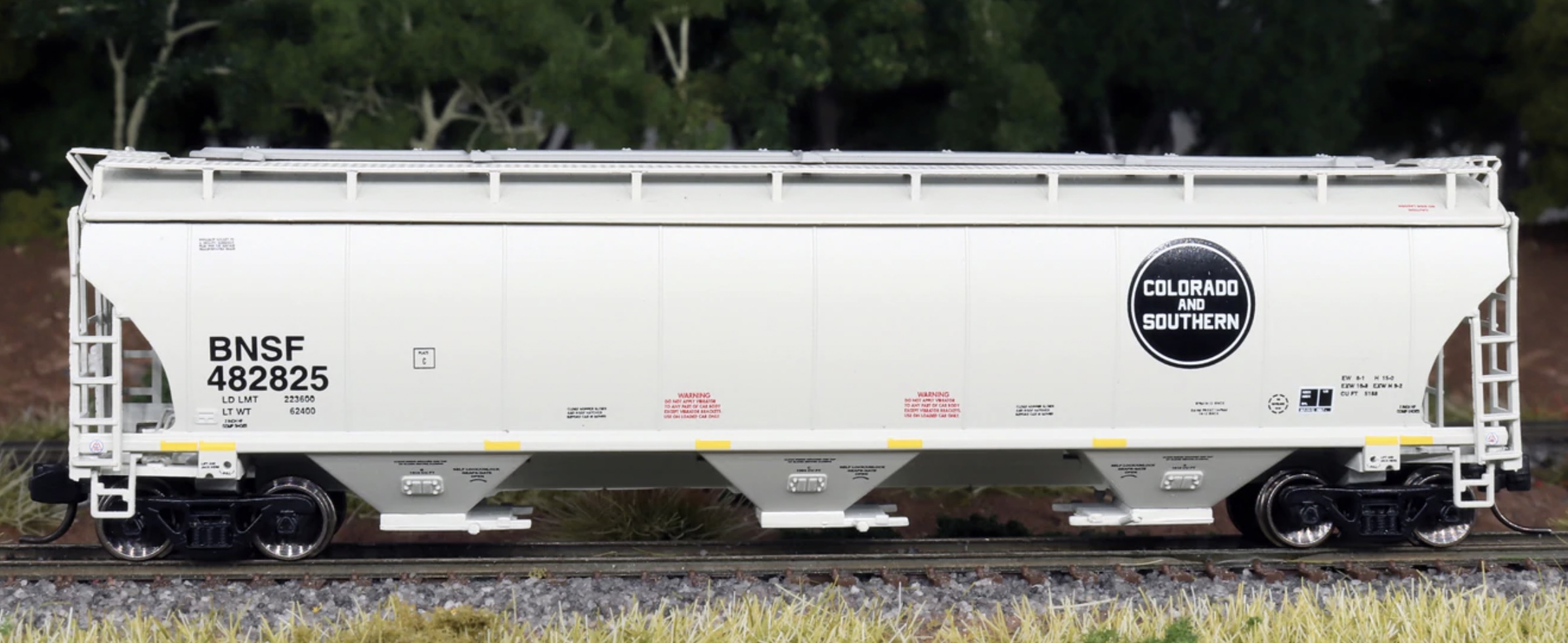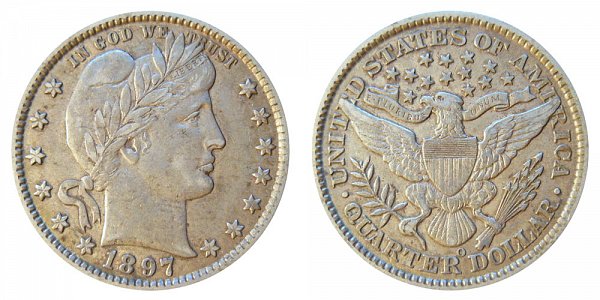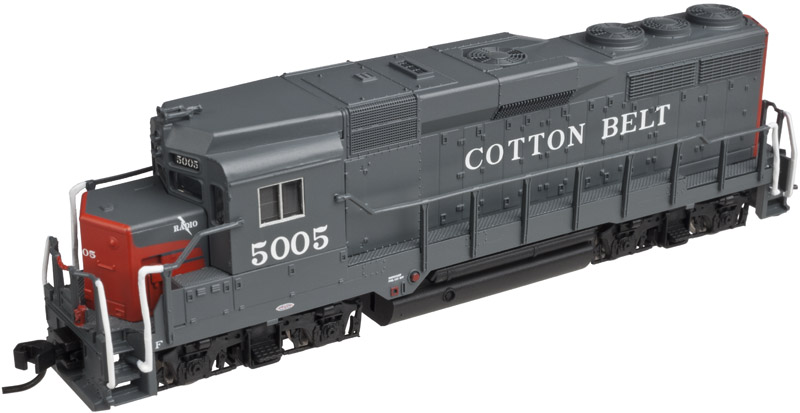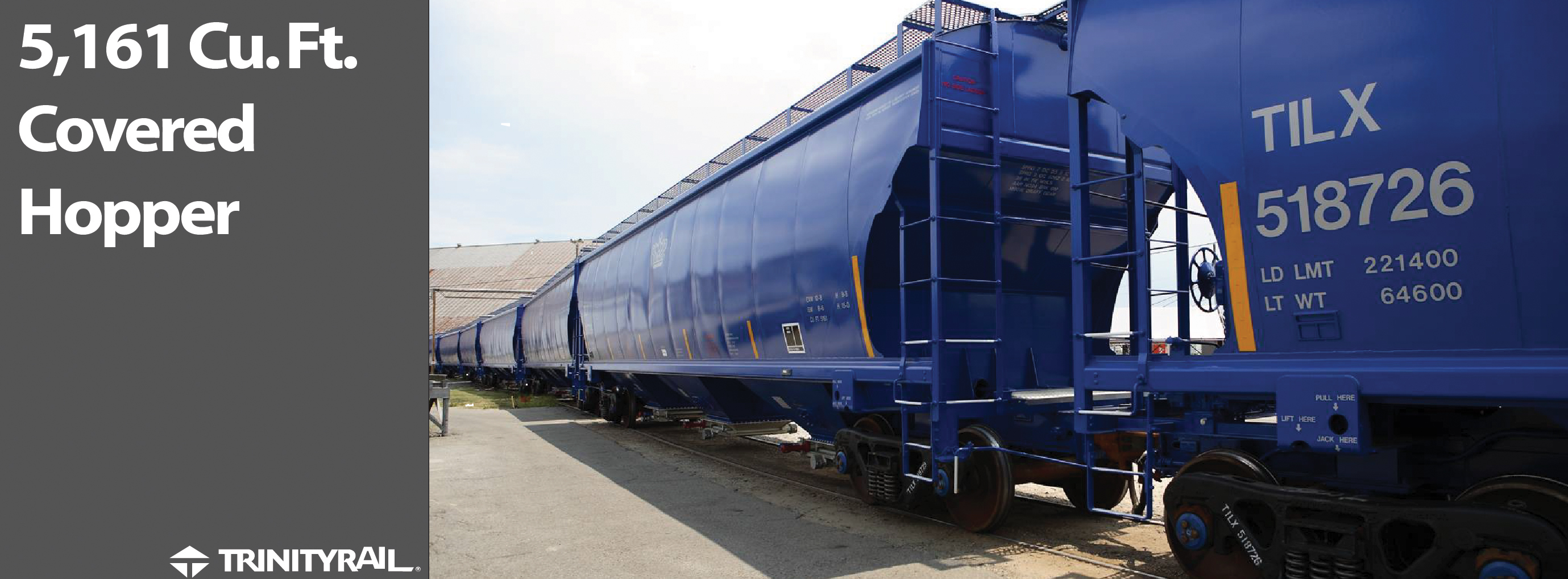Specific Item Information: BLT 10-12
Prototype History: TrinityRail’s extensive railcar product portfolio has a complete line of covered hopper cars including a 5,161 cubic foot covered hopper car optimized to transport agricultural products, sugar, dry chemicals, or other similar products. In 1995, Trinity Industries introduced a new center-sill design covered hopper car designed primarily for grain transport. The new design was visually quite different - this one featured curved sides versus previously familiar rib-sided design adopted from Pullman-Standard.
Road Name History: 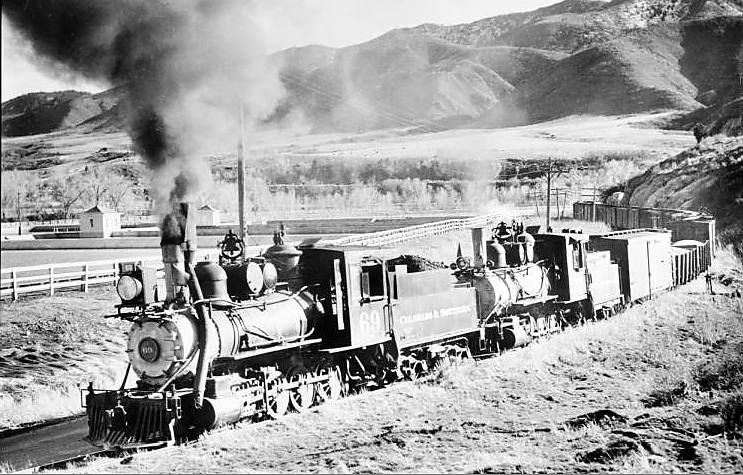 C&S was formed in 1898 with the consolidation of the Union Pacific Denver & Gulf and the Denver Leadville & Gunnison, both of whom had been under the control of Union Pacific prior to falling into receivership. C&S was best known for their 3’ gauge lines built westward from Denver by the Colorado Central (the so called “Clear Creek Lines” to Black Hawk, Central City, and Georgetown including the famous Georgetown Loop) and the Denver South Park & Pacific (southwest to Como, Climax, Leadville and for a short time, Gunnison.) However, the narrow gauge portion was a small fraction of the Colorado & Southern system.
C&S was formed in 1898 with the consolidation of the Union Pacific Denver & Gulf and the Denver Leadville & Gunnison, both of whom had been under the control of Union Pacific prior to falling into receivership. C&S was best known for their 3’ gauge lines built westward from Denver by the Colorado Central (the so called “Clear Creek Lines” to Black Hawk, Central City, and Georgetown including the famous Georgetown Loop) and the Denver South Park & Pacific (southwest to Como, Climax, Leadville and for a short time, Gunnison.) However, the narrow gauge portion was a small fraction of the Colorado & Southern system.
The standard gauge portion started from a point north of Wendover, Wyoming south through Cheyenne, Denver, Colorado Springs, Pueblo, Trinidad and on to Texline on the New Mexico – Texas border. There they connected with their subsidiary Fort Worth & Denver City Railway to Fort Worth and other Texas cities. C&S also controlled the Trinity & Brazos Valley which gave them friendly connections all the way to the port of Galveston. (We’ll cover the FW&D, T&BV and other C&S subsidiaries on future RRotD’s.) The mainline also included the famous “joint line” used by C&S, Santa Fe, and Rio Grande between Denver and Pueblo.
In 1908, Chicago Burlington & Quincy (who connected with C&S in Denver, Cheyenne and Wendover) bought about two thirds of C&S shares and took control. CB&Q was jointly controlled by Great Northern and Northern Pacific and the goal was to secure a through route from the Pacific Northwest to the Gulf of Mexico. C&S adopted CB&Q practices for steam locomotive designs and before long the “Burlington Route” shield appeared on tenders but with C&S lettering on the cabs. Other than that, C&S and FW&D were left to manage their own affairs to a large extent.
In 1937, the old South Park narrow gauge mainline was abandoned leaving only a short stub between Climax and Leadville to connect a molybdenum mine to a standard gauge Rio Grande branch. Four years later, the Clear Creek lines were abandoned and the Climax branch was standard gauged bringing an end to all C&S narrow gauge operations. The Climax branch would go on to host the last regular standard gauge freight service with a steam locomotive by a Class 1 railroad. 2-8-0 #641 would last drop its fire on October 11, 1962.
C&S pressed on through the diesel era with locomotives in CB&Q and later successor Burlington Northern paint but sub-lettered for C&S. Colorado & Southern was finally merged into Burlington Northern on the last day of 1981.

The standard gauge portion started from a point north of Wendover, Wyoming south through Cheyenne, Denver, Colorado Springs, Pueblo, Trinidad and on to Texline on the New Mexico – Texas border. There they connected with their subsidiary Fort Worth & Denver City Railway to Fort Worth and other Texas cities. C&S also controlled the Trinity & Brazos Valley which gave them friendly connections all the way to the port of Galveston. (We’ll cover the FW&D, T&BV and other C&S subsidiaries on future RRotD’s.) The mainline also included the famous “joint line” used by C&S, Santa Fe, and Rio Grande between Denver and Pueblo.
In 1908, Chicago Burlington & Quincy (who connected with C&S in Denver, Cheyenne and Wendover) bought about two thirds of C&S shares and took control. CB&Q was jointly controlled by Great Northern and Northern Pacific and the goal was to secure a through route from the Pacific Northwest to the Gulf of Mexico. C&S adopted CB&Q practices for steam locomotive designs and before long the “Burlington Route” shield appeared on tenders but with C&S lettering on the cabs. Other than that, C&S and FW&D were left to manage their own affairs to a large extent.
In 1937, the old South Park narrow gauge mainline was abandoned leaving only a short stub between Climax and Leadville to connect a molybdenum mine to a standard gauge Rio Grande branch. Four years later, the Clear Creek lines were abandoned and the Climax branch was standard gauged bringing an end to all C&S narrow gauge operations. The Climax branch would go on to host the last regular standard gauge freight service with a steam locomotive by a Class 1 railroad. 2-8-0 #641 would last drop its fire on October 11, 1962.
C&S pressed on through the diesel era with locomotives in CB&Q and later successor Burlington Northern paint but sub-lettered for C&S. Colorado & Southern was finally merged into Burlington Northern on the last day of 1981.
Brand/Importer Information: InterMountain was founded in 1985 by Fred Brummet. They got started in the model railroad business by producing O-Scale model kits. They got started in the N Scale business almost a decade later when in 1994 they introduced the 40-23 reefer car in kit form. Later, in 1998, they started producing RTR (Ready-to-Run) models. By the early 2000s, InterMountain phased out kit production in favor of the RTR models.
The InterMountain Railway company is located at 1224 Boston Ave in Longmont, CO. They are a manufacturer of HO, N and Z scale model trains. They have produced kits as well as RTR (Ready-To-Run) models. Their N Scale products include locomotives as well as rolling stock. Their rolling stock lineup includes Boxcars, Hoppers, Tank Cars, Reefers, Gondolas, Stock Cars and Flatcars.
Their locomotive releases have primarily been diesel units, with the one major exception being their series of AC-12 Cab Forward steam locos. Their diesel lineup includes F3's, F7's, F9's, SD40's, SD45's and FT units. They are known for quality and detail. They also release their rolling stock in larger varieties of road numbers than most of the other manufacturers.
The InterMountain Railway company is located at 1224 Boston Ave in Longmont, CO. They are a manufacturer of HO, N and Z scale model trains. They have produced kits as well as RTR (Ready-To-Run) models. Their N Scale products include locomotives as well as rolling stock. Their rolling stock lineup includes Boxcars, Hoppers, Tank Cars, Reefers, Gondolas, Stock Cars and Flatcars.
Their locomotive releases have primarily been diesel units, with the one major exception being their series of AC-12 Cab Forward steam locos. Their diesel lineup includes F3's, F7's, F9's, SD40's, SD45's and FT units. They are known for quality and detail. They also release their rolling stock in larger varieties of road numbers than most of the other manufacturers.
Item created by: petecduffy on 2019-02-12 10:31:51. Last edited by Alain LM on 2022-06-09 03:23:37
If you see errors or missing data in this entry, please feel free to log in and edit it. Anyone with a Gmail account can log in instantly.
If you see errors or missing data in this entry, please feel free to log in and edit it. Anyone with a Gmail account can log in instantly.


